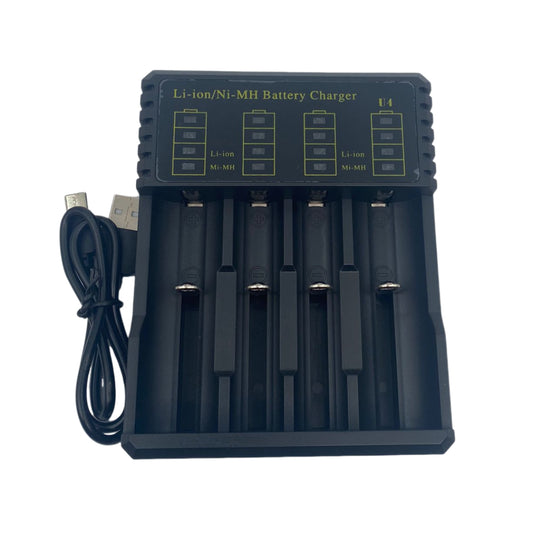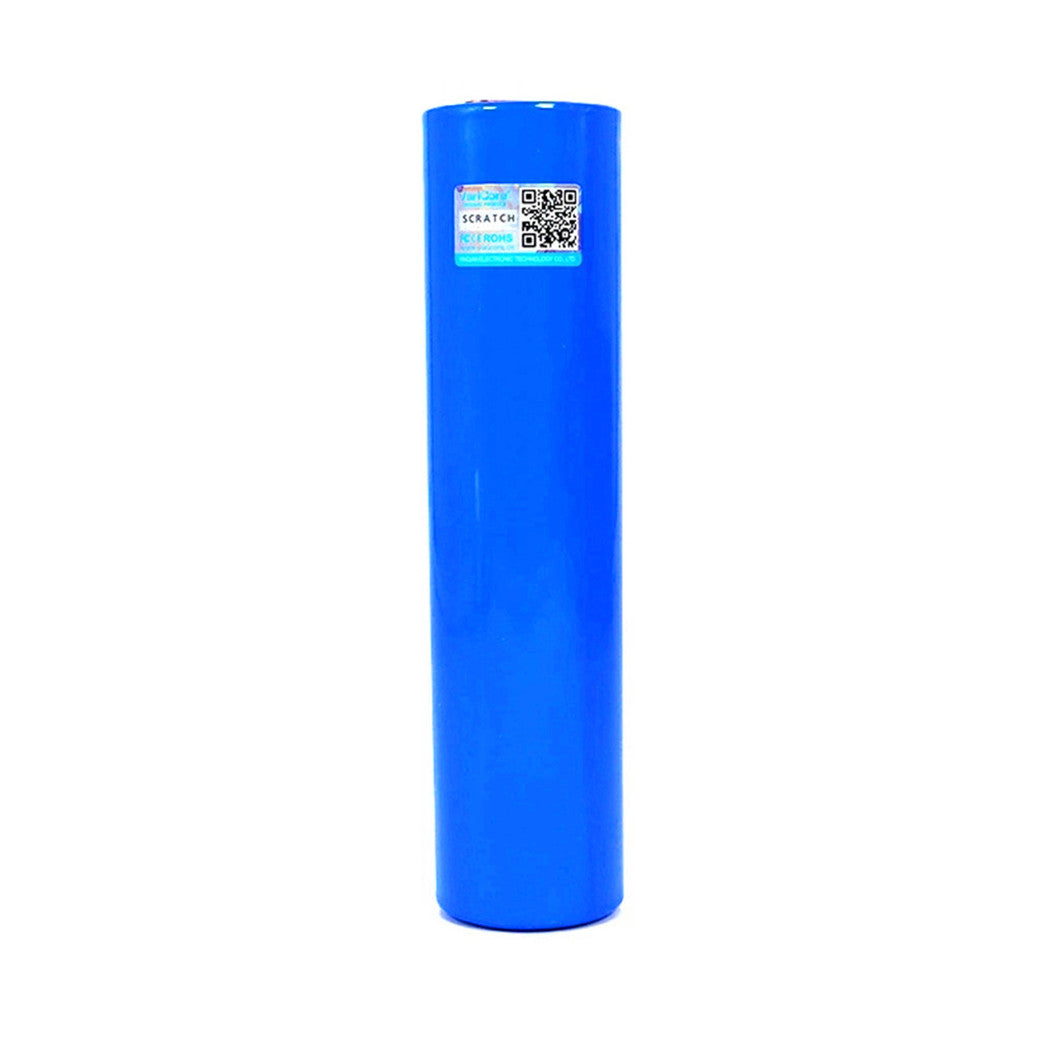-
Proveedor:BATTERYINT
Batería recargable de litio Lifepo4 de 3,2 V y 15 000 mAh 33140
- Precio habitual
- $14.68
- Precio habitual
-
- Precio de venta
- $14.68
- Precio unitario
- por
Batería recargable de litio Lifepo4 de 3,2 V y ... -
Proveedor:BATTERYINT
Batería recargable Lifepo4 33140 de 3,2 V y 15 000 mAh, con descarga de 5 C y para linterna de respaldo
- Precio habitual
- $24.81
- Precio habitual
-
- Precio de venta
- $24.81
- Precio unitario
- por
Batería recargable Lifepo4 33140 de 3,2 V y 15... -
Proveedor:BATTERYINT
Batería de 12 piezas 3,2 V 33140 15 Ah para bricolaje 4S 12v 24V 36V 48V 20AH 30AH herramienta eléctrica para scooter eléctrico
- Precio habitual
- $199.00
- Precio habitual
-
- Precio de venta
- $199.00
- Precio unitario
- por
Batería de 12 piezas 3,2 V 33140 15 Ah para bri... -
Proveedor:batteryzone-de
Batería Lifepo4 de 4 piezas, 3,2 V, 33140, 15 Ah, para patinete eléctrico DIY 4S, 12 V, 24 V, 36 V, 48 V, 20 Ah, 30 Ah
- Precio habitual
- $89.99
- Precio habitual
-
- Precio de venta
- $89.99
- Precio unitario
- por
Batería Lifepo4 de 4 piezas, 3,2 V, 33140, 15 ...
Demostración 1 -4 de 4 elementos
1. ¿Por qué es tan caro el fosfato de hierro y litio 33140?
Las baterías 33140 LiFePO4 suelen ser más caras, lo que viene determinado por los siguientes factores:
- En comparación con las baterías de iones de litio tradicionales, el proceso de producción de materiales de fosfato de hierro y litio 33140 es más complejo y utiliza materias primas más caras, lo que aumenta directamente el costo de producción.
- La batería 33140 Li-FePO4 tiene menos probabilidades de provocar una fuga térmica porque su estructura química es más estable. La producción de esta batería de alta seguridad requiere un control de calidad más estricto, lo que aumenta el costo.
-Las baterías Li-FePO4 33140 suelen proporcionar entre 2000 y 5000 ciclos de carga/descarga, superando ampliamente a las baterías de iones de litio tradicionales.
- En comparación con las baterías de iones de litio tradicionales, el proceso de producción de materiales de fosfato de hierro y litio 33140 es más complejo y utiliza materias primas más caras, lo que aumenta directamente el costo de producción.
- La batería 33140 Li-FePO4 tiene menos probabilidades de provocar una fuga térmica porque su estructura química es más estable. La producción de esta batería de alta seguridad requiere un control de calidad más estricto, lo que aumenta el costo.
-Las baterías Li-FePO4 33140 suelen proporcionar entre 2000 y 5000 ciclos de carga/descarga, superando ampliamente a las baterías de iones de litio tradicionales.
2. ¿Por qué mi batería Lifepo4 33140 se agota tan rápido?
Si su batería LiFePO4 modelo 33140 se agota rápidamente, las posibles causas incluyen:
- Envejecimiento de la batería: el uso a largo plazo puede reducir naturalmente la capacidad de la batería 33140.
- Efectos de la temperatura: Las temperaturas extremas, especialmente el frío, pueden reducir el rendimiento.
- Carga incompleta: Es posible que la batería no esté completamente cargada debido a una falta de coincidencia del cargador o problemas de calidad.
- Aumento del consumo de energía del dispositivo: Verifique si el uso de energía de su dispositivo ha aumentado o si tiene fallas.
- Mantenimiento inadecuado: el almacenamiento inadecuado y las descargas profundas frecuentes pueden degradar la batería más rápidamente.
- Envejecimiento de la batería: el uso a largo plazo puede reducir naturalmente la capacidad de la batería 33140.
- Efectos de la temperatura: Las temperaturas extremas, especialmente el frío, pueden reducir el rendimiento.
- Carga incompleta: Es posible que la batería no esté completamente cargada debido a una falta de coincidencia del cargador o problemas de calidad.
- Aumento del consumo de energía del dispositivo: Verifique si el uso de energía de su dispositivo ha aumentado o si tiene fallas.
- Mantenimiento inadecuado: el almacenamiento inadecuado y las descargas profundas frecuentes pueden degradar la batería más rápidamente.
3. ¿Puede el fosfato de hierro y litio 33140 incendiarse?
Las baterías 33140 LiFePO4 son muy seguras y presentan un bajo riesgo de incendio gracias a su estabilidad química, su umbral de temperatura elevado y sus mecanismos de seguridad integrados. Tienen una alta estabilidad térmica y resisten el descontrol térmico incluso cuando se sobrecargan o se sobrecalientan.
Con una temperatura de descomposición térmica superior a los 270 °C, es menos probable que se sobrecalienten. Además, estas baterías incluyen funciones de seguridad como protección contra sobrecarga, sobredescarga y cortocircuito.
Con una temperatura de descomposición térmica superior a los 270 °C, es menos probable que se sobrecalienten. Además, estas baterías incluyen funciones de seguridad como protección contra sobrecarga, sobredescarga y cortocircuito.
4. ¿Se pueden utilizar las pilas de litio 33140 a bajas temperaturas?
Sí, las baterías de litio 33140 pueden funcionar a temperaturas más frías, aunque su rendimiento puede verse afectado a temperaturas muy bajas. Normalmente, las baterías LiFePO4 33140 pueden funcionar eficazmente en entornos tan fríos como -20 °C (-4 °F), pero las velocidades de descarga pueden ser más lentas y la capacidad total puede verse reducida. Para un rendimiento óptimo, lo mejor es utilizar estas baterías dentro del rango de temperaturas recomendado, y si se utilizan con frecuencia en entornos fríos, incorporar un sistema de calentamiento de la batería puede ayudar a mantener la eficiencia.
5. ¿Son seguras las pilas 33140 para su uso en interiores?
Las baterías 33140 se consideran uno de los tipos de baterías de iones de litio más seguros y son aptas para su uso en interiores si se gestionan adecuadamente. A diferencia de otras químicas de iones de litio, las baterías LiFePO4 33140 son muy estables y menos propensas al sobrecalentamiento, lo que reduce los riesgos de incendios y explosiones. Además, estas baterías no liberan gases nocivos durante su funcionamiento normal, lo que las hace más seguras para espacios confinados. Sin embargo, sigue siendo esencial seguir las prácticas estándar de seguridad de las baterías, como evitar la exposición a temperaturas extremas y mantener la batería alejada de materiales inflamables.
6. Cómo se carga una batería 33140 lifepo4?
Cargar una batería 33140 LiFePO4 es sencillo, pero requiere un cargador diseñado específicamente para la química LiFePO4 para garantizar un rendimiento óptimo y la seguridad. Estos cargadores suelen emplear un método de carga de corriente constante/voltaje constante (CC/CV). Para cargar celdas LiFePO4 33140, simplemente conéctelas al cargador adecuado y permita que alcancen una carga completa, lo que generalmente toma unas pocas horas dependiendo de la salida del cargador y la capacidad de la batería. Es importante no usar cargadores diseñados para otras baterías de iones de litio, ya que pueden dañar las celdas LiFePO4.
7. ¿Cuáles son las principales ventajas de utilizar una batería 33140 lifepo4 frente a otros tipos?
Las baterías 33140 tienen varias ventajas, entre ellas, una vida útil más prolongada, una estabilidad térmica mejorada y características de seguridad mejoradas. A diferencia de las baterías de iones de litio tradicionales, las baterías LiFePO4 33140 son más resistentes a la fuga térmica, lo que reduce el riesgo de incendios. Además, estas baterías tienen una curva de descarga más plana, lo que significa que mantienen un voltaje más constante durante todo el ciclo de descarga, lo que proporciona energía confiable hasta que la batería está casi agotada. Su capacidad para soportar descargas profundas también las hace ideales para aplicaciones que requieren recargas frecuentes.
8. ¿Se pueden conectar baterías 33140 en serie o en paralelo?
Sí, las baterías 33140 LiFePO4 se pueden conectar en serie o en paralelo para aumentar el voltaje o la capacidad, respectivamente. La conexión de celdas 33140 de Lifepo4 en serie aumentará la salida de voltaje general, lo que resulta útil para aplicaciones que requieren un voltaje más alto, mientras que la conexión en paralelo aumentará la capacidad, lo que permitirá un mayor tiempo de funcionamiento. Es esencial utilizar baterías con valores nominales de voltaje y capacidad similares e incorporar un sistema de gestión de baterías (BMS) para garantizar una carga y descarga equilibradas, lo que ayuda a extender la vida útil general del paquete de baterías.
9. ¿Qué debo tener en cuenta al almacenar baterías 33140 durante un largo periodo de tiempo?
Al almacenar una batería 33140 durante un período prolongado, es mejor mantenerla con una carga del 50 % para evitar que se descargue o sobrecargue en exceso, ya que ambas pueden reducir la vida útil de la batería. Las baterías LiFePO4 33140 deben almacenarse en un lugar fresco y seco, lejos de la luz solar directa, ya que las altas temperaturas pueden acelerar la degradación de las celdas. Además, es recomendable revisar la batería cada pocos meses y recargarla si es necesario para mantener la carga en un nivel óptimo. Unas condiciones de almacenamiento adecuadas pueden ayudar a preservar la capacidad de la batería y prolongar su vida útil.
10. ¿Existen preocupaciones medioambientales al desechar las baterías 33140?
Las baterías LiFePO4, incluidas las del tipo 33140, se consideran generalmente más respetuosas con el medio ambiente en comparación con otras baterías de iones de litio porque no contienen metales pesados nocivos como el cobalto, el plomo o el cadmio. Sin embargo, las celdas Lifepo4 33140 deben desecharse de forma adecuada en centros de reciclaje de baterías designados para garantizar que los materiales se puedan recuperar o neutralizar de forma segura. La eliminación inadecuada, como tirarlas a la basura doméstica, puede provocar contaminación ambiental, por lo que es importante seguir las pautas locales para la eliminación y el reciclaje de baterías.





















